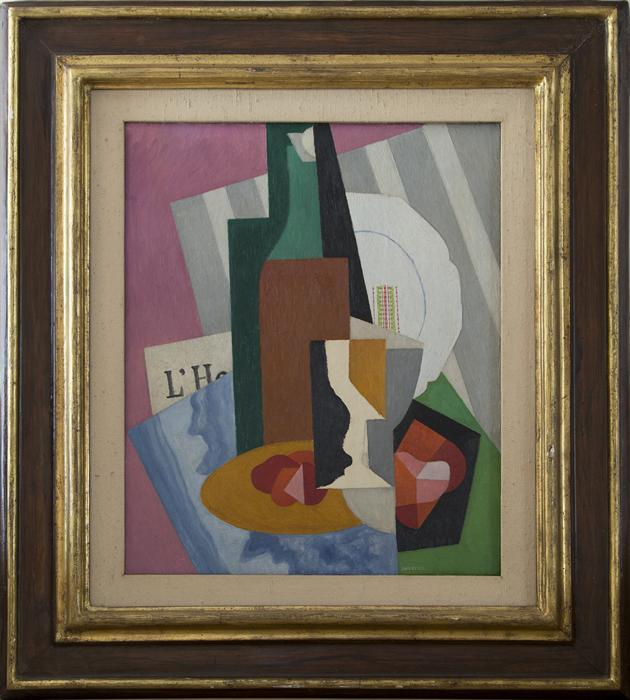Nature morte, 1916-1917
Gino Severini (Cortona 1883 – Paris 1966)
Nature morte
oil on canvas
1916-1917
cm 55 X 46,5
Nature morte is not the plural form of the Italian, natura morta [“still life”]. Rather, it is the singular form of the French. Indeed, this painting was produced in Paris, after the Futurist experience fell from favour. The piece takes the Cubist ideal to its furthest extremes, reducing surfaces to two-dimensional profiles and superimposing them in a space that, in losing its third dimension, embraces a fourth — time: the time to interpret the painting, punctuated by forms and objects in a mental concatenation governed by proportional ratios.
In 1899, Severini moves from Cortona to Rome. A year later, he meets Umberto Boccioni, and over the years that follow, the two frequent the studio of Giacomo Balla, who introduces Severini to the Divisionist and Post-Impressionist styles. In 1906, he arrives in Paris, where he would spend the majority of his life.
In 1910, he adds his name to Marinetti’s Manifesto dei pittori futuristi [“Manifesto of the Futurist Painters”], together with Boccioni, Balla and Carrà, and he involved in the first wave of solo exhibitions.
In 1916, he abandons his Futurist pursuits in favour of figurative pieces that form part of the “Return to Order”. The attempt to provide a scientific foundation to painting by defining the image along geometric-mathematical lines, brings Gino Severini back to classical proportions and a sculpted appearance. The journey from Cubism to Classicism eliminates the conflict between the abstract and the figurative, and the painting on display exhibits the painter at the ideal halfway point of this journey.
From the 1920s onwards, Severini dedicates himself to mural painting, first of religious buildings, then of public buildings from the 1930s onwards.
From 1935 to 1946 he returns to live in Italy, and from the late 1940s he returns to the Cubo-Futurist style, including unequivocally abstract compositions.
